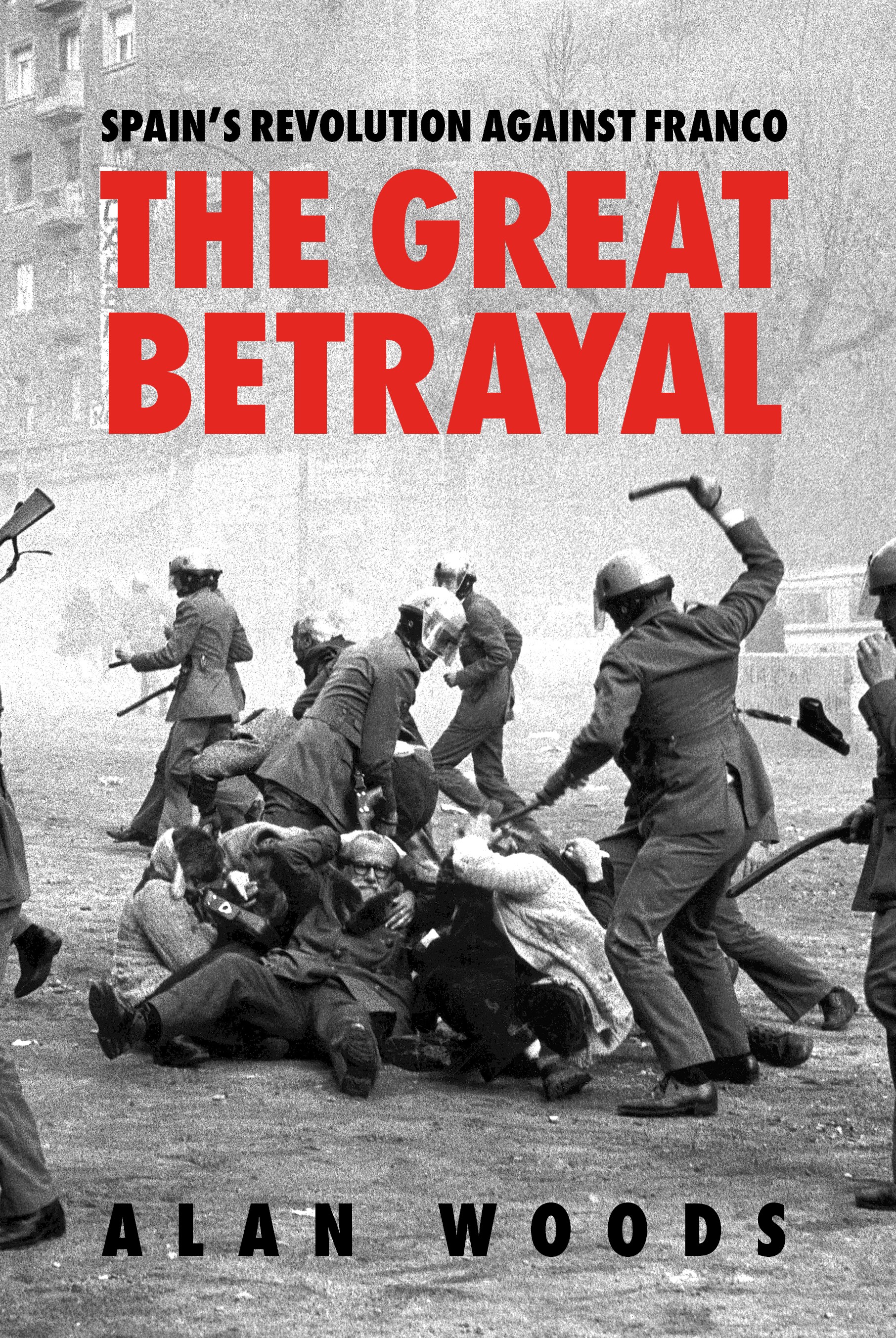In July, Wellred Books will release Spain's Revolution Against Franco: The Great Betrayal (available for pre-order now!) The author, Alan Woods, was a participant in the last phase of the struggle against Franco. He explains how a revolutionary movement of the working class defeated the regime – and could have gone further but for the betrayals of the workers’ leadership. The following article by Alan provides a general overview of the events discussed in far greater detail in the book.
The story of the Spanish Revolution of the 1930s is quite well known to most people on the left. But there is a surprising level of ignorance concerning the events that occurred subsequently. History did not cease with the victory of Franco in 1939. And the story of how the Franco dictatorship was eventually brought down by the revolutionary movement of the Spanish workers in the 1970s is an inspiring one.
Under the most difficult and dangerous conditions, Spanish workers launched a strike movement that is unparalleled in history. Nothing remotely resembling it can be seen in Nazi Germany or Mussolini’s Italy. Beginning with the heroic movement of the Asturian coalminers 1962, there was wave after wave of strikes, general strikes, demonstrations and protests.
This was a genuine revolution, which could and should have gone far further than it did. The Spanish workers and youth did everything in their power to bring about a revolutionary transformation of society. If they did not finally succeed, that was no fault of theirs. The Spanish revolution of the 1970s was shamefully betrayed by the leaders of the Communist and Socialist parties, who entered into an agreement with former fascists like Adolfo Suarez in order halt the revolutionary movement in its tracks. The result of this betrayal was the so-called democratic transition, which was merely a fig leaf to conceal the continuation of the old regime under the guise of a “parliamentary monarchy”.
The ignorance of what really occurred is not confined to countries outside Spain. For four decades, the Spanish ruling class, aided and abetted by the reformist and Stalinist leaders who betrayed the revolution, have gone to extraordinary lengths to ensure that the historical memory of the Spanish people is buried under a heap of lies, half-truths, distortions and myths. The key role of the working class in the overthrow of the dictatorship has been hidden, while those who conspired to preserve the dictatorship of capital and the most essential features of the old Franco state have been cynically presented as the saviours of Spanish democracy.
I had the honour and privilege of participating personally in the last, decisive phase of this inspiring class struggle and was a witness of some of its key moments. I feel I have a duty to inform the new generation of what actually occurred, to tear away the thick veil of lies that has been used to conceal the truth, and to recreate the marvellous revolutionary mood of those inspiring times.
The long night of Francoism
On April 1, 1939, General Franco declared victory over the people of Spain. A long nightmare began that lasted almost four decades. Nobody knows exactly how many people were killed in the bloody four-year Civil War. Estimates range from 200,000 to one million. The true figure may be somewhere between these estimates. But the slaughter did not end there.
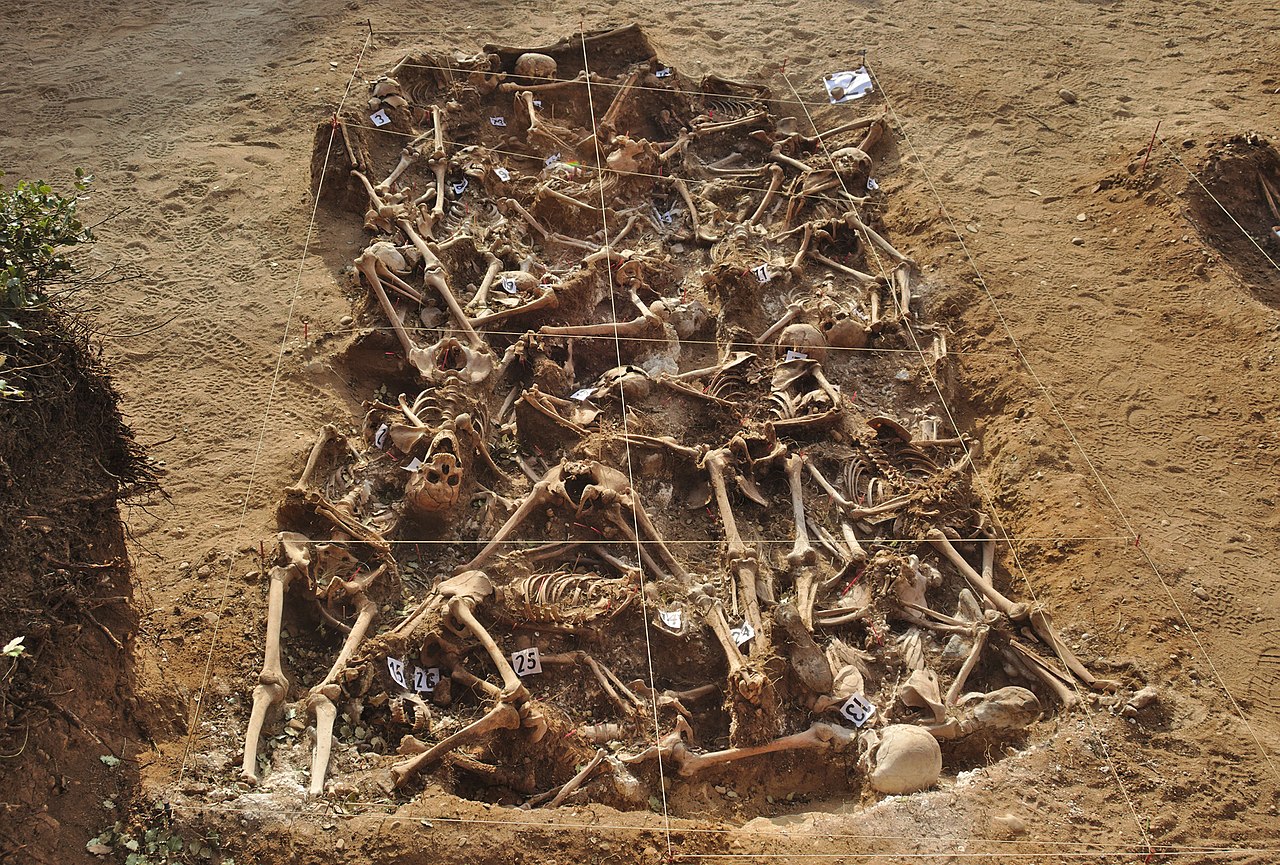 Hundreds of thousands of people were killed by fascist forces in the Civil War and under the Franco dictatorship / Image: Mario Modesto Mata
Hundreds of thousands of people were killed by fascist forces in the Civil War and under the Franco dictatorship / Image: Mario Modesto Mata
The savage repression that began in the nationalist zones during the Civil War continued unabated after the war itself. The fascists exacted terrible revenge on the workers. Hundreds of thousands of Republicans, Communists and Socialists were arrested and interned in concentration camps, and countless numbers were murdered or disappeared in Franco’s prisons.
Strikes, demonstrations, workers’ assemblies, free trade unions and political parties were all banned. Under Franco, all Spanish workers were obliged to join the fascist union, or CNS – the Sindicato, or the “Vertical Union” as it was referred to by the workers. Modelled on the syndicates of Mussolini's Italy, the CNS organised both employers and workers in the same structure. Wages were fixed by employers and officials of the CNS. The workers' “representatives" were handpicked by the bureaucrats of the Sindicato in agreement with the bosses.
The Roman Catholic Church had supported the fascists during the Civil War, which they described as a “crusade”. Under Franco, the church enjoyed an absolute monopoly over religious, cultural and educational life. The priests and bishops exercised spiritual dictatorship over the souls of the people, which coincided exactly with the physical dictatorship over their bodies.
The reawakening
It took a long time before the Spanish proletariat could recover from its wounds. But recover it did. In the 1960s, the first miners’ strikes in the Asturias heralded the revolutionary reawakening of the workers of Spain. This unprecedented wave of strikes dates from the spring of 1962. This magnificent movement was unfolding in the teeth of the laws of the fascist dictatorship. The movement was faced with ferocious repression.
The government declared a state of siege in the provinces affected by the strike. This was equivalent to a declaration of martial law. Trade union activists were arrested and sentenced by court martial to prison terms ranging from 5 to 18 years. But it was all too late. The movement had already gained an unstoppable momentum.
Between 1964 and 1966, there were 171,000 working days lost due to industrial action. Between 1967 and 1969, the figure rose to 345,000 and in the period 1970 to 1972, it almost tripled to 846,000. In 1973 to 1975, it went even higher, to 1,548,000. After the death of Franco, the strike movement reached its apogee. From 1976 to mid-1978, an astonishing 13,240,000 working days were lost in strikes. In 1970, there were four times the number of strikes as in 1969; and in 1971, two-and-a-half times the number in 1970.
There were many victims in this struggle. Many workers lost their lives in confrontations with the police and hundreds more were detained or sacked from their jobs for participating in demonstrations, strikes or illegal meetings. But the curve of the strike movement was moving sharply upwards. In 1973, a general strike was declared in Pamplona, which elected a strike committee consisting of representatives of all the most important enterprises.
Many of the strikes were not caused by wage demands but by solidarity action with workers at the same firm who had been dismissed, or in solidarity with workers from other firms who were in dispute. Thus, even under the rifles of the armed police, and despite the network of informers, police spies and agents provocateur, the workers were acting as a class.
The death of a dictator
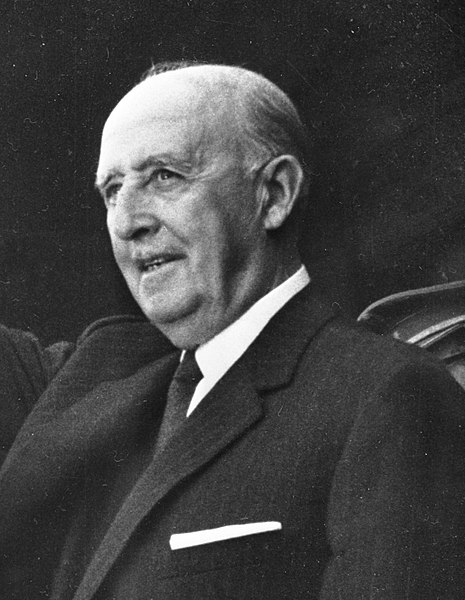 On 20 November 1975, the death of Franco was finally announced. This opened the floodgates for class struggle / Image: public domain
On 20 November 1975, the death of Franco was finally announced. This opened the floodgates for class struggle / Image: public domain
In the last period of his life, Franco was artificially kept alive on the orders of a ruling clique that lived in mortal fear of his demise. The fact that the regime saw its fate dependent upon the decaying body of a sick old man was a graphic expression of its extreme weakness. In reality, the regime had lost its mass base in society. Under the influence of the workers’ mass strikes, practically every level of Spanish society was opposed to the regime. Not only the students, but lawyers, doctors, university lecturers and newspaper editors, actors, film directors and playwrights moved into opposition to the dictatorship.
On 20 November 1975, the death of Franco was finally announced. Official mourning was declared by the regime, but the news was greeted with rejoicing in every workers’ district. The shops reported that their stocks of champagne rapidly ran out. The disappearance of the hated dictator opened the floodgates of the class struggle, which reached a new level of intensity.
The new government of Arias Navarro offered a “reform”, which in reality was merely the continuation of Francoism under a new name. But this trick fooled nobody. The regime was split and fighting for its life. But like a wounded animal, that made it even more ferocious.
In Madrid
I moved to Madrid in January 1976 with my first wife Pam and two young children. From our flat in the working-class district of Carabanchel, we could see the notorious prison where the regime incarcerated political prisoners and trade union leaders. The atmosphere in Madrid was electric.
There were strikes on the Metro, and the postal and telecommunications sectors; the rail network (Renfe), taxi drivers and hundreds of other companies in Madrid’s red belt saw strike action; as did Getafe metal, Pegaso, Standard, Chrysler operatives and others. The Madrid newspaper Informaciones (on 9 January) put the number of striking workers in the capital at 100,000, but unofficial estimates gave double that number.
The government had to call in the military to keep the Metro and postal services running. In reality, Madrid came very close to a general strike. The students were also moving into action. The universities were in a constant state of ferment, with illegal assemblies and political agitation continuing non-stop.
The police crackdown was hard. Ana Munoz, who was a student at the Complutense University of Madrid, recalls how she saw some students throw themselves through plate-glass windows in order to escape the truncheons of the riot police. Many people were arrested, beaten and tortured.
Fraga, the hardline Minister of the Interior, issued a threat to demonstrators: “the street is mine”. But the workers and youth of Spain were challenging that bold assertion every day. The revolutionary movement that swept throughout Spain reached its climax in the Basque city of Vitoria on March 3, 1976.
The 3rd of March
The strike movement in Vitoria had already begun at the beginning of the year. The workers organised democratically elected representative committees, which the employers described as “a local soviet”. I travelled to Vitoria in a carload of comrades. What we found was something like an occupied city, swarming with armed police and civil guards. In fact, we only narrowly escaped arrest that night when the car was stopped at a police checkpoint.
I attended a meeting of several thousand workers and their wives in the church of San Francisco. In those days, the only places one could meet were churches and monasteries. It was, in effect, a soviet. What impressed me most was the strict discipline of the meeting and revolutionary fervour of the speeches of the workers, and particularly of the women showed an iron determination to carry the struggle to the end.
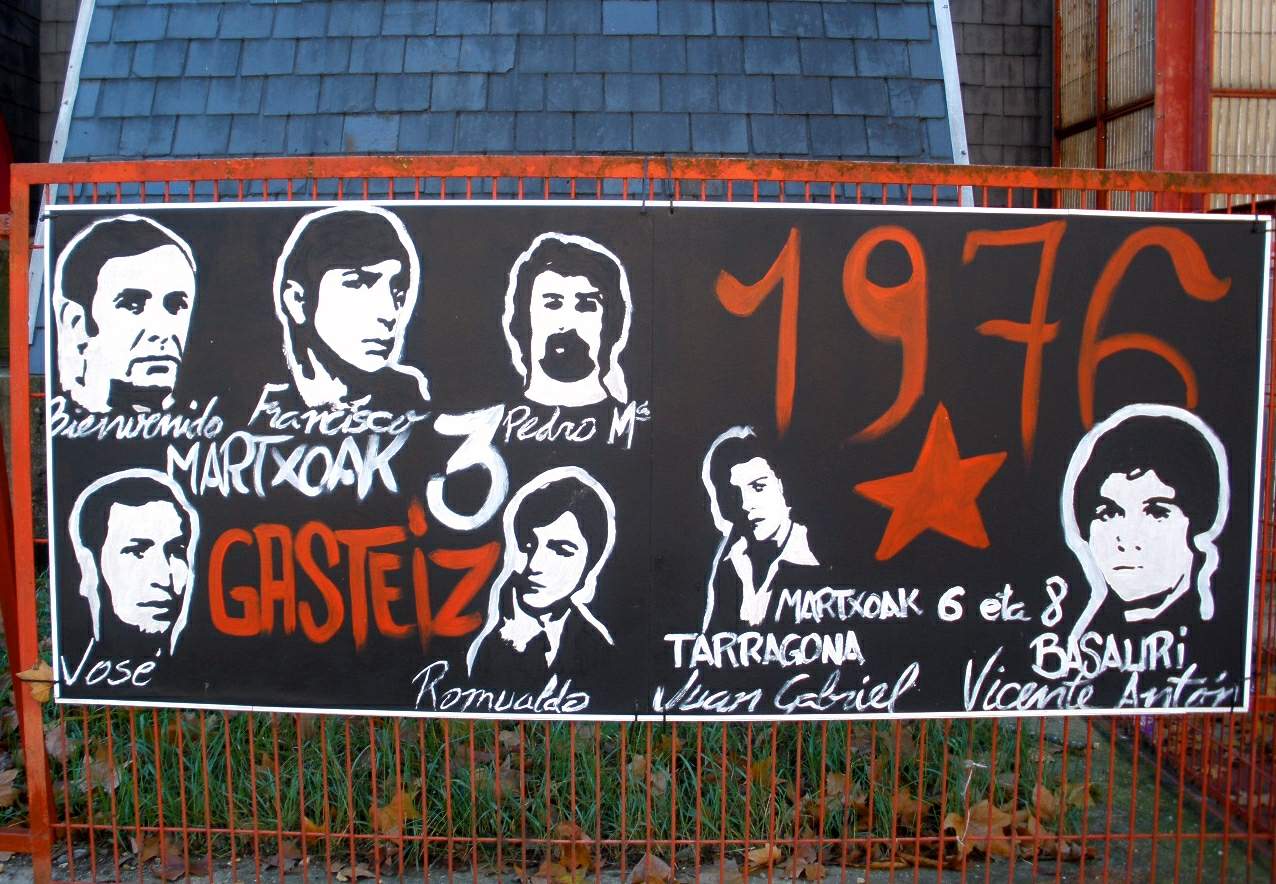 On 3 March 1976 in Vitoria, five workers were killed and many wounded by the police. This attrocity was a turning point that electrified the situation all across Spain / Image: Zarateman
On 3 March 1976 in Vitoria, five workers were killed and many wounded by the police. This attrocity was a turning point that electrified the situation all across Spain / Image: Zarateman
The next day, the workers marched in orderly columns to the centre of the city. They formed something like human barricades in the streets and stopped the traffic. After a while, the sirens of the police were heard, and the human barricades dissolved. But the workers were still present: on street corners or in bars. It was a kind of guerrilla war. After a while, somebody had the idea of, rather than forming human barricades, demolishing streetlights or pushing cars to form barricades.
At some point, we were driving along the street, when a policeman rushed towards us with his baton drawn, with the obvious intention of breaking the windshield, although we were not doing anything. Obviously, they wanted to beat people up, but since the invisible enemy disappeared as soon as they arrived, there was no one to hit. They were out of control, crazed by frustration and anger.
At about 5 o’clock in the afternoon, the workers and their families assembled once more in the church of San Francisco. Surprisingly, the police allowed them to enter. But once they were inside, the police surrounded the church and blocked all the entrances. They ordered the people to disperse, and when they refused, they fired tear gas and smoke bombs into the church.
The explosions and the sound of shattering glass caused panic inside the church, where a huge number of men women and children were gathered. People were gasping for breath and struggled to get out. But as they staggered into the sunlight, the police opened fire with automatic weapons. Five workers were killed and many others were wounded.
The idea of a general strike
The events in Vitoria had an electrifying effect on the consciousness of hundreds of thousands of workers across the entire Spanish State. Strikes and spontaneous demonstrations broke out in various parts of the country. A clear, pre-revolutionary situation had opened up in Spain. All of the classical objective conditions for socialist revolution were present. Under these conditions, the slogan of a general strike was posed point-blank. The workers had already staged local and regional general strikes all over Spain, accompanied by mass demonstrations and street protests. But such actions had definite limits.
The Spanish workers had shown their power. But this power was as yet present only as a potential. In order for that potential to become an actual reality, it needed to be organised and mobilised. What was required was an all-Spain general strike to finish the job. This was entirely possible. All that was necessary was for the leaders to issue the strike call and fix the day. But the call never came. The reason for this is not to be found in any lack of willpower on the part of the workers. They had shown time and again their willingness to fight and make sacrifices in order to achieve their demands. The problem was one of leadership.
Through their strikes and general strikes, the workers had demonstrated their power to bring the whole of society to a grinding halt. They had defied the state and its repressive forces with impressive courage and determination. Yet, in the final analysis, all this counted for nothing. The future of Spain was determined by a tiny handful of individuals who really represented nothing but themselves. Reformist labour politicians and a small clique of former Francoist bureaucrats decided everything behind the backs of the masses.
The Communist Party was the most decisive force in the working class at that time. But its leaders were implacably opposed to the idea of a general strike. They had absolutely no confidence in the ability of the Spanish workers to take power into their own hands and were anxiously seeking somebody to whom to hand the power they were terrified to assume.
Revolution and counterrevolution
Before he died, Franco attempted to guarantee the continuation of his regime in the form of a restored monarchy. For some years, he had been grooming Prince Juan Carlos for this role, and as King, he began to assert his right to hold power. Arias was now completely discredited, and Juan Carlos seized the opportunity in July 1976 to dismiss him and appoint a new man in his place.
Adolfo Suárez used to be the president of the National Movement – the only political party that was permitted in Franco’s Spain. In July 1976, Juan Carlos, whom Franco had named his successor and king of Spain, appointed him as President of the Government (the equivalent of prime minister). There can have been few such remarkable transformations in history.
The dismissal of Arias Navarro and the hasty instalment of Adolfo Suárez were clear indications that the regime was split down the middle. This move was not a reflection of strength but extreme weakness. But instead of taking advantage of this weakness to go onto the offensive, the workers’ leaders immediately waved the white flag and hastened to do a deal.
The fact of the matter is that they had intended to do this all along. What they were waiting for was a suitable opportunity and a cooperative interlocutor with whom to negotiate a sell-out. That opportunity now presented itself in the person of Adolfo Suárez, and they embraced him with every possible enthusiasm.
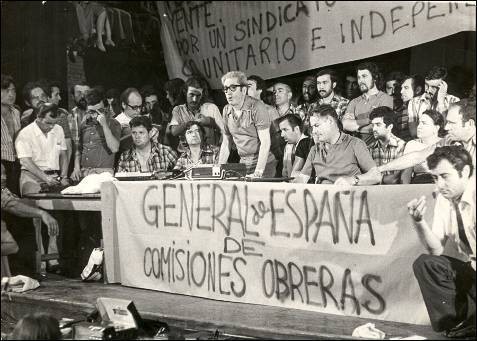 In January 1977, the situation reached a critical point / Image: public domain
In January 1977, the situation reached a critical point / Image: public domain
In January 1977, the situation in Spain reached a critical point. The extreme right-wing elements, determined to sabotage any possibility of reform, utilised the services of fascist gangs to create an atmosphere of terror on the streets. Terrorist actions, kidnappings and murder were used for this purpose.
The murder of a young student called Arturo Ruiz was met by mass student demonstrations on the streets of Madrid. On one of those demonstrations, a young girl, Mari-Luz Najera, was killed when the policeman fired a smoke bomb canister directly at her face. On the same day, in Atocha in central Madrid, fascist gunmen entered the office of a group of labour lawyers working for the Communist-dominated workers’ commissions and shot five people in cold blood.
Marx once said that the revolution needs the whip of counterrevolution. The bloody provocations of the counterrevolutionaries had the opposite results to those intended. They were intended to strike a blow against the Communist Party, but only succeeded in increasing its authority in the eyes of the masses. They were intended to create an atmosphere of fear, but the Atocha murders caused a wave of revulsion and anger such as I have never seen before or since.
The initiative now passed to the revolution. All the conditions existed for calling an all-out general strike. But once again, the Communist Party leaders applied the brakes. The massive demonstration that filled the streets of Madrid at the funerals of the victims was heavily policed by Communist Party stewards who imposed silence and prevented the display of any banners or slogans.
The CP leaders saw this as an occasion, not to lead a mass movement to overthrow the regime, but to prop it up and to enter into negotiations. Santiago Carrillo stated publicly that “we must support the government”.
Pacts and Consensus
In the Book of Genesis, Esau sold his birthright for a mess of pottage. That was not a bad deal compared to the one arrived at by Carrillo and González, who surrendered the power that had been conquered through the action of the working class in exchange for a fake democracy. Herein lies the secret of the so-called Democratic Transition.
A man with no broad political perspectives and even fewer principles, Suarez was nevertheless a skilful political manoeuvrer. He quickly grasped the fact that, in order to survive, the regime needed to make concessions and do a deal with the workers’ leaders. Having failed to defeat the movement through repression, he would try to derail it by taking the road of concessions.
The new president knew he could not rule without basing himself on the leaders of the Socialist and Communist parties. He leaned on them, and they leaned on the working class. But instead of basing themselves on the power of the working class, these leaders were hypnotised by the spectre of state power, even though that power was rapidly disintegrating before their very eyes. They behaved like frightened rabbits blinded by the headlamps of a car.
Suarez must have been astonished to discover that the leaders of the Socialists and Communists were only too eager to do a deal. Particularly important was the role of Santiago Carrillo, the leader of the Communist Party (PCE). The main plank of Carrillo’s programme – one might call it an obsession – was the need to curry favour with the liberals, or even the so-called reformist wing of the Franco regime.
They were frightened of everything: the regime, the army, the Church, the masses, and even the sound of their own voices. They saw the mass movement not as a power, but merely as a bargaining chip in their negotiations with the regime. They were ready and willing to sacrifice it in exchange for whatever was offered to them. They were not even good negotiators in narrow trade union terms. In the end, not a great deal was left of the original demands. The reality is that the leaders of the opposition had already decided to surrender before they had even stepped through the door of Suárez’s office.
In exchange for the legalisation of the Communist Party, Carrillo was prepared to accept almost anything. He accepted Suarez’s reform in its entirety, including the monarchy and its flag. This was a betrayal of the most fundamental principles, not just of the Communist Party, but of Spanish democrats in general. At this point in time, the monarchy had absolutely no base of support in Spain.
If there had been a referendum to decide whether Spain would be a republic or monarchy, the result would have been overwhelmingly in favour of a republic. This was later admitted by Suarez himself. Yet no such referendum was ever held, and the Communist Party banned the display of Republican flags in its meetings, and beat up those who try to display them.
Here we have the real, ugly face of the democratic transition in Spain. We should add that the conduct of Felipe Gonzalez and the PSOE was not one whit better.
The “Democratic Transition”
In order to justify this abject surrender, González and Carrillo tried to argue that the alternative would have been the intervention of the army and a bloody crackdown. This argument assumes, incredibly, that the only thing preventing such a crackdown was the personal authority of Adolfo Suárez. It would appear that the Spanish generals were convinced by a couple of conversations with Suárez and the King. Here we leave the realm of political reality far behind and enter that of a fairy story.
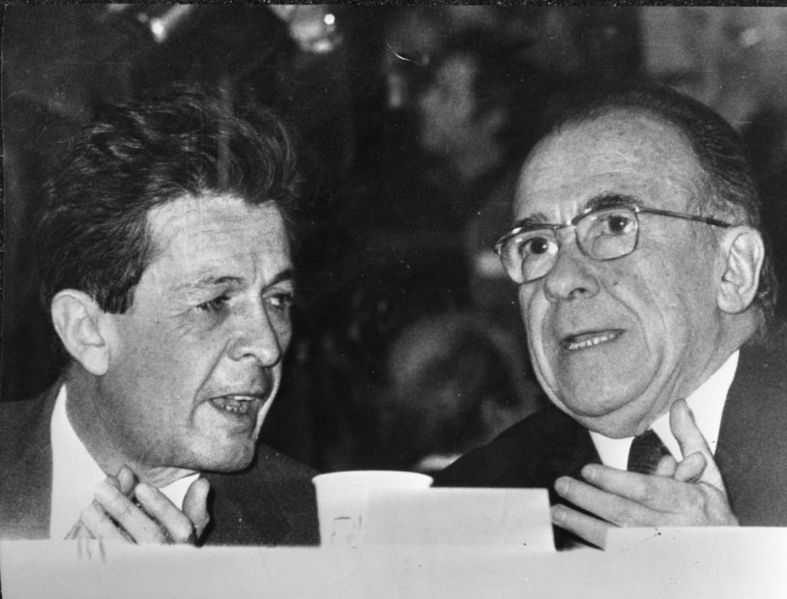 The Communist and Socialist leaders had no confidence in the working class, and sold out the revolution / Image: Fotograaf Onbekend
The Communist and Socialist leaders had no confidence in the working class, and sold out the revolution / Image: Fotograaf Onbekend
In the first place, the much-feared crackdown had been taking place continuously for the whole of the previous period. The brutal suppression of demonstrations and strikes, the assassinations in Atocha, 3 March in Vitoria, and many other cases of repression are sufficient proof that the regime had already exhausted the avenue of repression, which had entirely failed to halt the revolutionary movement. A continuation of these methods was bound to produce an explosion that would sweep away the regime in its entirety. For that very reason the regime was compelled to pass from repression to concession as a means of self-preservation.
As for using the army, that would have been an extremely risky strategy. The Spanish army at that time was a conscript army. The Vitoria events exposed the existence of serious tension between the soldiers and the police. Any attempt to use the troops against strikers would risk breaking the army into pieces. The generals were well aware of this, and divisions were also opening up at the top of the army, and even within the police.
The fact is that both the Communist and Socialist leaders, having no confidence whatever in the ability of the working class to change society, had decided in advance that the best way of arriving at a parliamentary democracy in which they would be comfortably installed in ministerial positions, was to do a deal with the regime. The Communist Party had decided this decades before, when it accepted the so-called Freedom Pact. It has maintained this position ever since. The correlation of forces had absolutely nothing to do with it.
The great betrayal
The price of the Transition was paid by the masses who had fought to overthrow the old regime. The so-called Democratic Transition anointed the old regime with a little “democratic” oil, but left it virtually intact. The repressive bodies remained. The Civil Guard continued to shoot demonstrators, and torture and murder prisoners in the jails.
Not a single person was punished for the crimes, murders and atrocities of the dictatorship. The murderers and torturers walked freely in the streets, where they could laugh in the faces of their victims. An amnesty law passed in 1977 forbade the prosecution of crimes committed during the dictatorship. A pact of silence was imposed that gagged the people of Spain for decades. They were simply supposed to forget the one million who were killed in the Civil War and over the 40 years of dictatorship.
The monstrous privileges of the Roman Catholic Church, that bulwark of the counterrevolution, were left untouched – an intolerable burden on the people of Spain. The vast armies of nuns and priests were to remain in charge of their schools, their salaries paid by the taxpayer.
The history books were rewritten in such a way that none of this was supposed to have happened. The mass graves, where thousands of nameless corpses lay beneath olive groves and mountain passes, were to be left undisturbed so as not to prevent tourists from admiring the view. This was a betrayal of everything the workers of Spain had been fighting for. Four decades later, the people of Spain are still living with the consequences.

